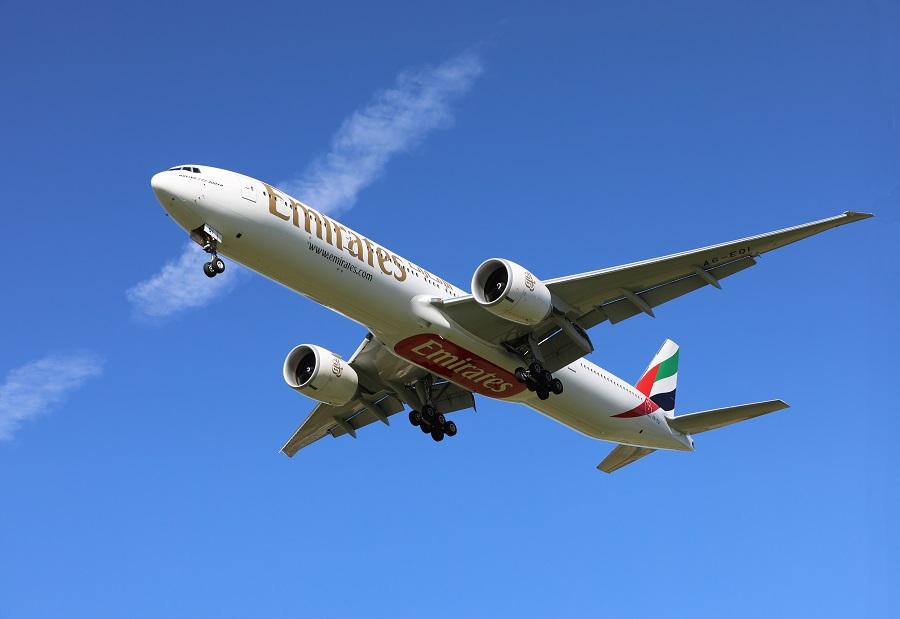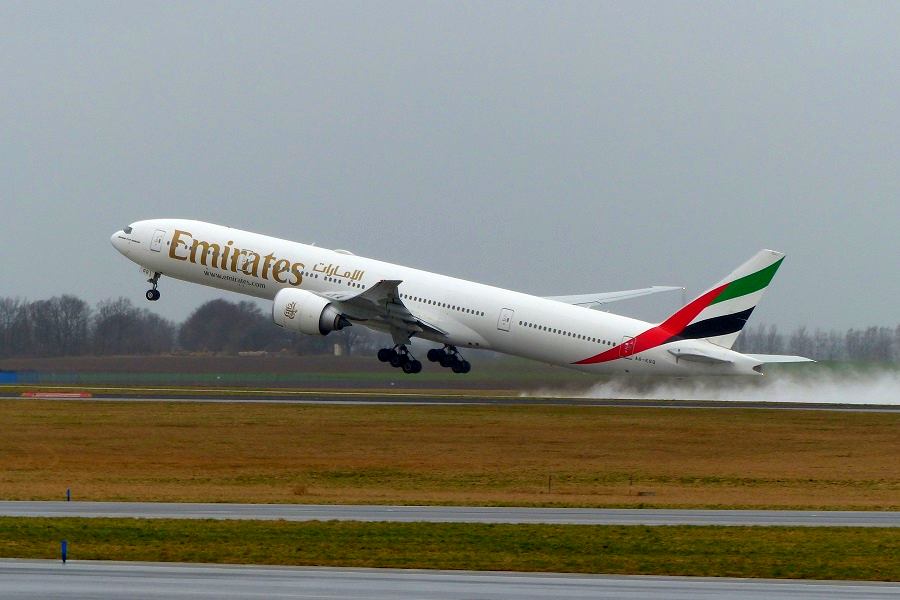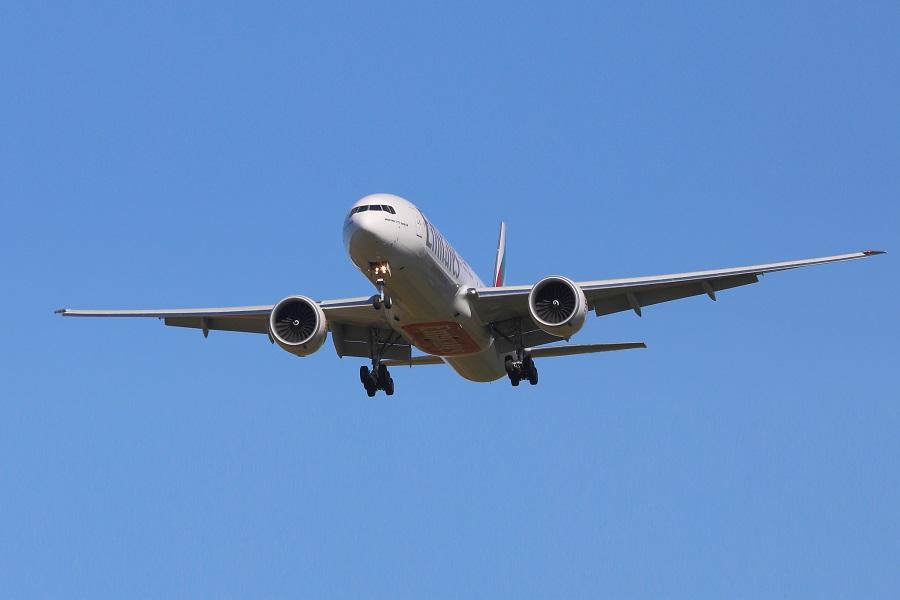An Emirates 777 suffered damage as it rotated past the end of the runway, during take-off in Dubai. The event raises some awkward questions.
On its own, this was a curious incident. But a subsequent release from the airline to its crews raises more questions about it. The incident happened on the 20th of December, on flight EK-231. It departed from Dubai International (OMDB) in the United Arab Emirates, heading for Washington Dulles (KIAD) in the United States. Dubai is obviously the airline’s home airport.

The Emirates 777 crew were using runway 30R, to depart from Dubai. This is a 4 km (13,123 feet) runway, with very generous displaced thresholds and safety areas in both ends. However, the aircraft’s takeoff roll took the entire length of the runway. And a bit more, it seems. According to the aircraft’s own transponder data, it became airborne 4,400 metres (14,436 feet) from the threshold of 30R.
So the crew lifted off around 48 metres (157 feet) into the safety area, and 90 metres (295 feet) short of the localizer antennas of 12L. Its ground speed was at least 214 knots. The Emirates 777 then gained altitude, still flying very low over the industrial and residential areas, beyond the runway. However, the aircraft then continued normally, for the approximately 14-hour flight to Washington. It landed without further incident.

Emirates 777 Takeoff – Aftermath
The aircraft also flew the return leg (EK-232) normally. However, the airline kept it on the ground for approximately four days, according to reports. The same source says that Emirates dismissed four 777 crew members, as a result of this event. And while it did not confirm this, Emirates released the following alert for 777 crews:
LANDING/ SHUT DOWN MCP CHANGES
CREWS ARE REMINDED THAT THERE ARE NO FCOM NORMAL PROCEDURE (NP) REQUIREMENTS TO CHANGE THE MCP AFTER LANDING OR SHUTDOWN.
THERE HAVE BEEN TIMES WHEN THE MCP “ALTITUDE WINDOW” HAS BEEN SET TO THE AIRPORT ELEVATION WHICH MAY CAUSE ISSUES ON THE SUBSEQUENT DEPARTURE. THE FCOM 4.10.2 STATES THAT THE AFDS WILL ENGAGE IN “ALT” WHEN THE FIRST FLIGHT DIRECTOR SWITCH IS TURNED ON, IF THE MCP SELECTED ALTITUDE IS WITHIN 20 FEET OF THE DISPLAYED BARO ALTITUDE. CREWS SHALL NOT SET AIRPORT ELEVATION ON THE MCP AFTER LANDING OR SHUT DOWN.

What Emirates is saying to its 777 crews is that the Flight Director (FD) would not engage in normal climb mode, because the computer thought that it has reached its target altitude. In other words, the Flight Director in the pilot’s display did not command a rotation. However, this suggests that this crew were rotating on FD commands, rather than monitoring their V1 and Vr speeds!
This has raised some eyebrows. We don’t know what damage, if any, the Emirates 777 and/or the airport sustained in the incident. The aircraft is a Boeing 777-300ER, with tail number A6-EQI. It is just over 4 years old. The aircraft resumed normal service, following its four days on the ground after returning from Washington.




1 comment
Tom Sobieck
So the plane in question might not have sustained any extensive damage in the late rotation?